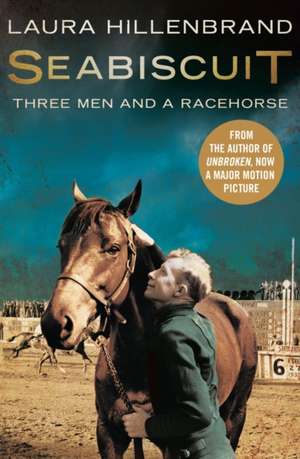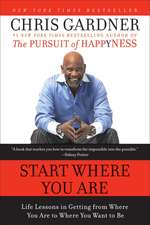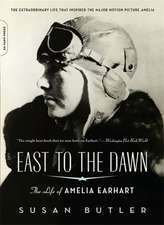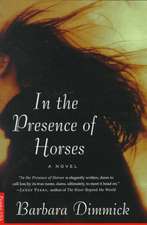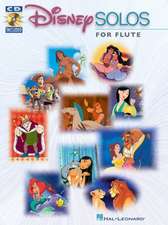Seabiscuit: Waterstones Reading the 21st Century
Autor Laura Hillenbranden Limba Engleză Paperback – mar 2002
Add descriptionIn their place, modern America was born. But what defined this new era? Nothing more than the story of Seabiscuit, a stunted colt with asymmetrical knees that had for two years been hacked around no-good race tracks leading to permanent leg damage. Yet by 1937 Seabiscuit could draw crowds of 60,000 and had more newspaper column inches devoted to him than Mussolini, Hitler or Roosevelt, his popularity peaking during his appearances at the Santa Anita Handicap. America had gone to the races for the first time since the Depression and fallen in love with a misshapen colt of great character. Now it wanted a winner. 'Seabiscuit' is also the story of three men: Tom Smith, a former Wild West showman was the trainer; Red Pollard, abandoned by his poverty-stricken family at a race track became the rider; and Charles Howard, a pioneer car manufacturer in San Francisco in the 1920s was the owner and financier. These three combined to create the legend of Seabiscuit and epitomise a dream for the emerging new America.
| Toate formatele și edițiile | Preț | Express |
|---|---|---|
| Paperback (2) | 83.28 lei 3-5 săpt. | +14.33 lei 4-10 zile |
| HarperCollins Publishers – mar 2002 | 83.28 lei 3-5 săpt. | +14.33 lei 4-10 zile |
| BALLANTINE BOOKS – 28 feb 2002 | 110.96 lei 3-5 săpt. |
Din seria Waterstones Reading the 21st Century
-
 Preț: 74.85 lei
Preț: 74.85 lei - 15%
 Preț: 81.47 lei
Preț: 81.47 lei -
 Preț: 38.86 lei
Preț: 38.86 lei - 14%
 Preț: 56.55 lei
Preț: 56.55 lei - 22%
 Preț: 49.95 lei
Preț: 49.95 lei - 21%
 Preț: 46.65 lei
Preț: 46.65 lei - 23%
 Preț: 49.51 lei
Preț: 49.51 lei - 19%
 Preț: 69.83 lei
Preț: 69.83 lei - 27%
 Preț: 51.02 lei
Preț: 51.02 lei - 22%
 Preț: 55.36 lei
Preț: 55.36 lei - 15%
 Preț: 59.94 lei
Preț: 59.94 lei - 15%
 Preț: 109.57 lei
Preț: 109.57 lei -
 Preț: 71.62 lei
Preț: 71.62 lei - 24%
 Preț: 53.43 lei
Preț: 53.43 lei - 22%
 Preț: 50.40 lei
Preț: 50.40 lei - 30%
 Preț: 49.75 lei
Preț: 49.75 lei - 20%
 Preț: 57.69 lei
Preț: 57.69 lei - 21%
 Preț: 56.42 lei
Preț: 56.42 lei - 33%
 Preț: 34.87 lei
Preț: 34.87 lei - 22%
 Preț: 50.99 lei
Preț: 50.99 lei - 21%
 Preț: 67.38 lei
Preț: 67.38 lei - 22%
 Preț: 56.07 lei
Preț: 56.07 lei - 17%
 Preț: 41.51 lei
Preț: 41.51 lei - 24%
 Preț: 48.23 lei
Preț: 48.23 lei -
 Preț: 70.07 lei
Preț: 70.07 lei -
 Preț: 84.51 lei
Preț: 84.51 lei - 16%
 Preț: 47.67 lei
Preț: 47.67 lei - 14%
 Preț: 56.24 lei
Preț: 56.24 lei -
 Preț: 67.10 lei
Preț: 67.10 lei -
 Preț: 69.07 lei
Preț: 69.07 lei - 22%
 Preț: 50.81 lei
Preț: 50.81 lei - 16%
 Preț: 58.59 lei
Preț: 58.59 lei -
 Preț: 58.49 lei
Preț: 58.49 lei - 41%
 Preț: 43.05 lei
Preț: 43.05 lei -
 Preț: 56.83 lei
Preț: 56.83 lei -
 Preț: 82.33 lei
Preț: 82.33 lei - 23%
 Preț: 44.35 lei
Preț: 44.35 lei -
 Preț: 51.44 lei
Preț: 51.44 lei -
 Preț: 57.14 lei
Preț: 57.14 lei -
 Preț: 70.22 lei
Preț: 70.22 lei - 25%
 Preț: 47.53 lei
Preț: 47.53 lei - 20%
 Preț: 41.86 lei
Preț: 41.86 lei - 22%
 Preț: 55.98 lei
Preț: 55.98 lei - 23%
 Preț: 49.60 lei
Preț: 49.60 lei - 23%
 Preț: 39.67 lei
Preț: 39.67 lei - 21%
 Preț: 56.51 lei
Preț: 56.51 lei -
 Preț: 73.70 lei
Preț: 73.70 lei - 23%
 Preț: 53.77 lei
Preț: 53.77 lei - 45%
 Preț: 39.19 lei
Preț: 39.19 lei -
 Preț: 69.72 lei
Preț: 69.72 lei
Preț: 83.28 lei
Nou
15.94€ • 16.68$ • 13.26£
Carte disponibilă
Livrare economică 11-25 martie
Livrare express 22-28 februarie pentru 24.32 lei
Specificații
ISBN-10: 1841150924
Pagini: 496
Ilustrații: portraits
Dimensiuni: 129 x 198 x 29 mm
Greutate: 0.35 kg
Editura: HarperCollins Publishers
Seria Waterstones Reading the 21st Century
Locul publicării:United Kingdom
Notă biografică
From the Hardcover edition.
Extras
Charles Howard had the feel of a gigantic onrushing machine: You had to either climb on or leap out of the way. He would sweep into a room, working a cigarette in his fingers, and people would trail him like pilot fish. They couldn’t help themselves. Fifty-eight years old in 1935, Howard was a tall, glowing man in a big suit and a very big Buick. But it wasn’t his physical bearing that did it. He lived on a California ranch so huge that a man could take a wrong turn on it and be lost forever, but it wasn’t his circumstances either. Nor was it that he spoke loud or long; the surprise of the man was his understatement, the quiet and kindly intimacy of his acquaintance. What drew people to him was something intangible, an air about him. There was a certain inevitability to Charles Howard, an urgency radiating from him that made people believe that the world was always going to bend to his wishes.
On an afternoon in 1903, long before the big cars and the ranch and all
the money, Howard began his adulthood with only that air of destiny and
21 cents in his pocket. He sat in the swaying belly of a transcontinental
train, snaking west from New York. He was twenty-six, handsome, gentle-manly, with a bounding imagination. Back then he had a lot more hair than
anyone who knew him later would have guessed. Years in the saddles of
military-school horses had taught him to carry his six-foot-one-inch frame
straight up.
He was eastern born and bred, but he had a westerner’s restlessness.
He had tried to satisfy it by enlisting in the cavalry for the Spanish-American War, and though he became a skilled horseman, thanks to bad
timing and dysentery he never got out of Camp Wheeler in Alabama. After
his discharge, he got a job in New York as a bicycle mechanic, took up
competitive bicycle racing, got married, and had two sons. It seems to have been a good life, but the East stifled Howard. His mind never seemed to
settle down. His ambitions had fixed upon the vast new America on the
other side of the Rockies. That day in 1903 he couldn’t resist the impulse
anymore. He left everything he’d ever known behind, promised his wife
Fannie May he’d send for her soon, and got on the train.
He got off in San Francisco. His two dimes and a penny couldn’t carry
him far, but somehow he begged and borrowed enough money to open a
little bicycle-repair shop on Van Ness Avenue downtown. He tinkered
with the bikes and waited for something interesting to come his way.
It came in the form of a string of distressed-looking men who began appearing at his door. Eccentric souls with too much money in their pockets
and far too much time on their hands, they had blown thick wads of cash
on preposterous machines called automobiles. Some of them were feeling
terribly sorry about it.
The horseless carriage was just arriving in San Francisco, and its debut
was turning into one of those colorfully unmitigated disasters that bring
misery to everyone but historians. Consumers were staying away from the
“devilish contraptions” in droves. The men who had invested in them
were the subjects of cautionary tales, derision, and a fair measure of public loathing. In San Francisco in 1903, the horse and buggy was not going the
way of the horse and buggy.
For good reason. The automobile, so sleekly efficient on paper, was in
practice a civic menace, belching out exhaust, kicking up storms of dust,
becoming hopelessly mired in the most innocuous-looking puddles, tying
up horse traffic, and raising an earsplitting cacophony that sent buggy
horses fleeing. Incensed local lawmakers responded with monuments to
legislative creativity. The laws of at least one town required automobile
drivers to stop, get out, and fire off Roman candles every time horse-drawn vehicles came into view. Massachusetts tried and, fortunately, failed to
mandate that cars be equipped with bells that would ring with each revo-
lution of the wheels. In some towns police were authorized to disable passing cars with ropes, chains, wires, and even bullets, so long as they took
reasonable care to avoid gunning down the drivers. San Francisco didn’t
escape the legislative wave. Bitter local officials pushed through an ordinance banning automobiles from the Stanford campus and all tourist
areas, effectively exiling them from the city.
Nor were these the only obstacles. The asking price for the cheapest
automobile amounted to twice the $500 annual salary of the average citizen— some cost three times that much—and all that bought you was four
wheels, a body, and an engine. “Accessories” like bumpers, carburetors,
and headlights had to be purchased separately. Just starting the thing,
through hand cranking, could land a man in traction. With no gas stations,
owners had to lug five-gallon fuel cans to local drugstores, filling them for
60 cents a gallon and hoping the pharmacist wouldn’t substitute benzene
for gasoline. Doctors warned women away from automobiles, fearing slow
suffocation in noxious fumes. A few adventurous members of the gentler
sex took to wearing ridiculous “windshield hats,” watermelon-sized fabric
balloons, equipped with little glass windows, that fit over the entire head,
leaving ample room for corpulent Victorian coiffures. Navigation was another nightmare. The first of San Francisco’s road signs were only just
being erected, hammered up by an enterprising insurance underwriter
who hoped to win clients by posting directions into the countryside,
whose drivers retreated for automobile “picnic parties” held out of the
view of angry townsfolk.
Finally, driving itself was something of a touch-and-go pursuit. The
first automobiles imported to San Francisco had so little power that they
rarely made it up the hills. The grade of Nineteenth Avenue was so daunting for the engines of the day that watching automobiles straining for the
top became a local pastime. The automobiles’ delicate constitutions and
general faintheartedness soon became a source of scorn. One cartoon from the era depicted a wealthy couple standing on a roadside next to its dearly
departed vehicle. The caption read, “The Idle Rich.”
Where San Franciscans saw an urban nuisance, Charles Howard saw
opportunity. Automobile-repair shops hadn’t been created yet—and
would have made little sense anyway as few were fool enough to buy a car.
Owners had no place to go when their cars expired. A bicycle repairman
was the closest thing to an auto mechanic available, and Howard’s shop
was conveniently close to the neighborhoods of wealthy car owners.
Howard hadn’t been in town long before the owners began showing up on
his doorstep.
Howard had a weakness for lost causes. He accepted the challenge,
poked around in the cars, and figured out how to fix them. Soon he was
showing up at the primitive automobile races held around the city. Before
long, he was driving in them. The first American race, run around
Evanston, Illinois, had been held only eight years before, with the winning
car ripping along at the dizzying average speed of seven and a half miles
per hour. But by 1903, automotive horsepower had greatly improved—
one car averaged 65.3 mph in a cross-European race that season—making
the races a good spectacle. It also made for astronomical casualty rates.
The European race, for one, turned into such a godawful bloodletting that
it was ultimately halted due to “too many fatalities.”
Howard was beginning to see these contraptions as the instrument of
his ambition. Taking an audacious step, he booked a train east, got off in
Detroit, and somehow talked his way into a meeting with Will Durant,
chief of Buick Automobiles and future founder of General Motors.
Howard told Durant that he wanted to be a part of the industry, troubled
though it was. Durant liked what he saw and hired him to set up dealerships
and recruit dealers. Howard returned to San Francisco, opened the
Pioneer Motor Company on Buick’s behalf, and hired a local man to manage
it. But on a checkup visit, he was dismayed to find that the manager
was focusing his sales effort not on Buicks but on ponderous Thomas Flyers. Howard went back to Detroit and told Durant that he could do better.
Durant was sold. Howard walked away with the Buick franchise for all of
San Francisco. It was 1905, and he was just twenty-eight years old.
Howard returned to San Francisco by train with three Buicks in tow.
By some accounts, he first housed his automobiles in the parlor of his old
bicycle-repair shop on Van Ness Avenue before moving to a modest building
on Golden Gate Avenue, half a block from Van Ness. He brought Fannie
May out to join him. With two young boys to feed, and two more soon
to follow, Fannie May must have been alarmed by her husband’s career
choice. Two years had done little to pacify the San Franciscan hostility for
the automobile. Howard failed to sell a single car.
Recenzii
–The New York Times
“Engrossing . . . Fast-moving . . . More than just a horse’s tale, because the humans who owned, trained, and rode Seabiscuit are equally fascinating. . . . [Hillenbrand] shows an extraordinary talent for describing a horse race so vividly that the reader feels like the rider.”
–Sports Illustrated
“REMARKABLE . . . MEMORABLE . . . JUST AS COMPELLING TODAY AS IT WAS IN 1938.”
–The Washington Post
